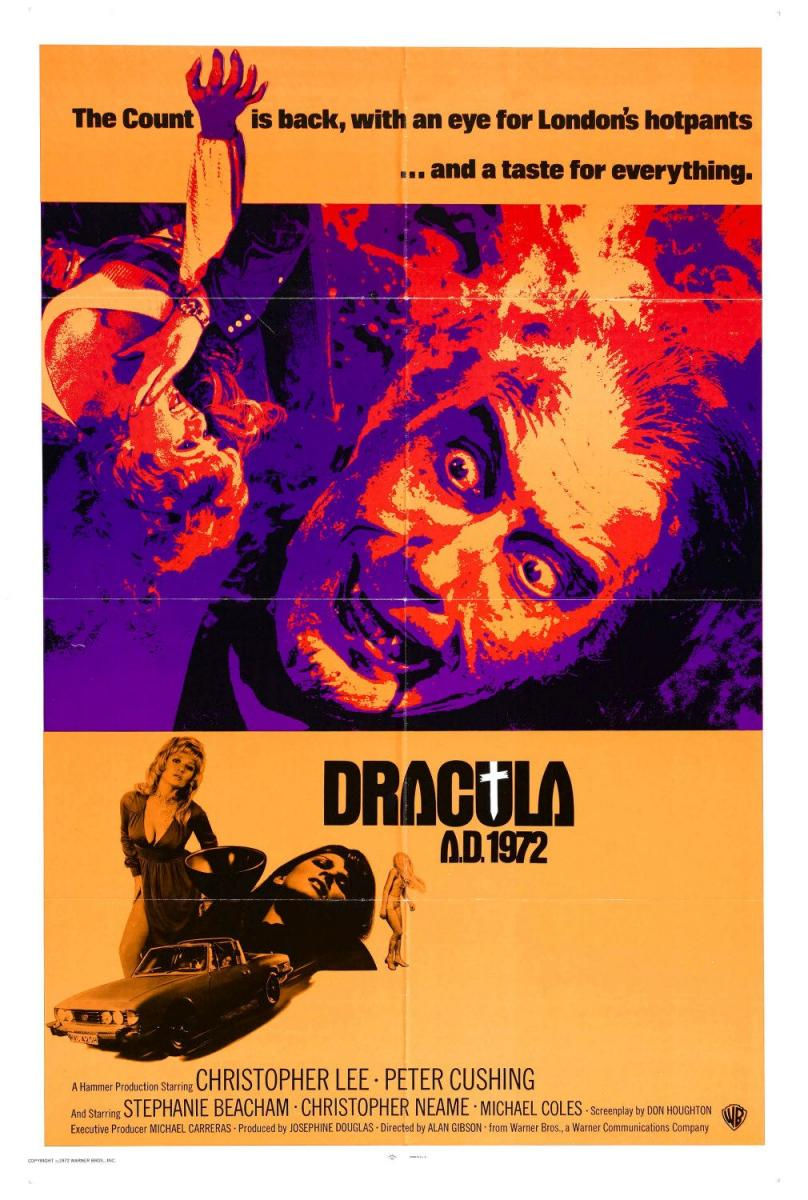Dracula A.D. 1972
- Eric Mattina

- Jul 19, 2020
- 2 min read

Dir. Alan Gibson
95 Minutes
UK
1972
Starring: Christopher Lee, Peter Cushing, Stephanie Beacham, Christopher Neame, Michael Coles, Marsha A. Hunt, Caroline Munro
**1/2/*****
While the Hammer Dracula series always seemed repetitive and relied on a template for its individual narratives (especially compared to the terrific and consistently inventive Frankenstein series with Peter Cushing), Dracula A.D. 1972 (the seventh entry!) seems to be aware of this criticism and uses the picture as an attempt to shake things up a bit. First, returning Peter Cushing's vampire hunter Van Helsing (or, at least, a descendent of him) into the equation after being absent since the wonderful, though Lee-less, second entry The Brides of Dracula, and moving the action one hundred years into 1972 London (the tagline wonderfully referring to "London's hot pants"). However, the film begins in 1872 where Helsing and Dracula are having a fight to the death, of which both end up falling victim. In the present day, a group of hip London young adults (including one Caroline Munro), at the suggestion of new gang member Johnny Alucard, decide to liven up their drab existence by participating in a resurrection, though the reluctant Jessica Van Helsing (Stephanie Beacham) soon discovers that her involvement is not purely an accident. Soon Lee's Dracula is back and Johnny is revealed to have a closer connection with the vampire than it had seemed. And Jessica's grandfather, the demonologist Lorrimer Van Helsing (Cushing), is forced to try and rescue his granddaughter from the dangers of the undead.
Moving the action into the present day is an inventive choice (and the reveal of the year in the opening title card as a plane suddenly appears in frame is quite cool), but the picture never exactly does anything to justify the switch other than giving the illusion of novelty in a series that had been clearly past its prime. And while it is fun to see a balance act between Lee's 1872 figure and the 1972 setting, the entire juxtaposition is relegated entirely to surface level and the narrative itself settles for the cat-and-mouse rhythm of the previous unmemorable entries. In this way, the things that Hammer does to bring a new type of life to the franchise are truly the only things that set this installment apart from the others. The film would be followed by The Satanic Rites of Dracula which continues the thread of the contemporary narrative before getting very weird with the kung-fu horror hybrid The Legend of the 7 Golden Vampires, which would close out the Dracula cycle.
October 23rd, 2019





Comments